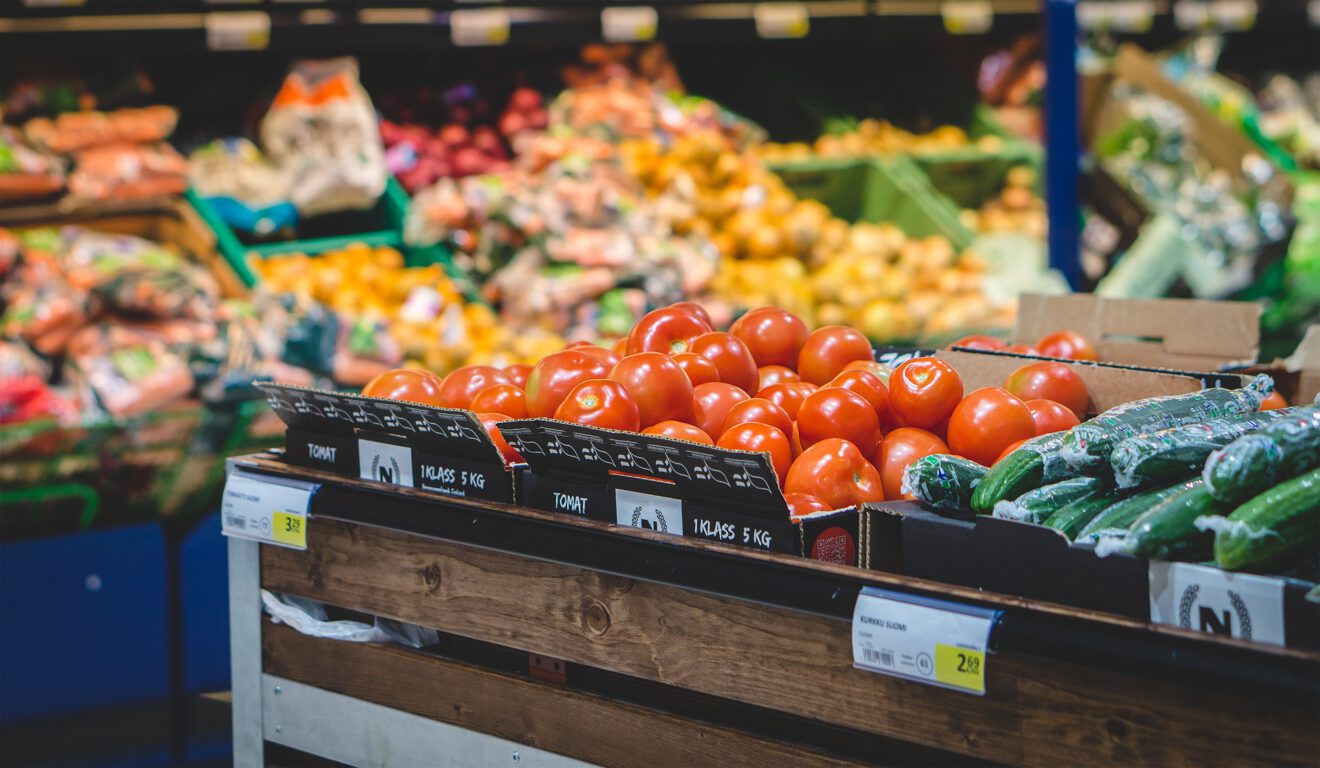With Amazon’s acquisition of Whole Foods, the rise of subscription meal kits, and new competition from pureplay grocery delivery services, it seems like everyone is trying to build a better grocery store. But what if the supermarket of the future is the one right around the corner?
When we think about artificial intelligence and its potential to transform the retail industry, it is easy to overlook how it could affect one of the most fundamental shopping experiences around: the grocery store. Right now, the conversation and real-world applications of AI are limited to voice assistants and chatbots. But the potential goes much farther than that. Thanks to a wealth of customer data and product information, grocers are uniquely positioned to apply machine learning and AI in other areas of the business — and reduce food waste along the way.
Grocery is not the most efficient industry. With a heavy reliance on the movement of perishable goods, supermarkets tend to live and die on their ability to plan, promote and sell goods within a narrow amount of time. By some estimates, US food waste is about one-third of everything that gets produced — or about 60 tons and $160 billion each year. While some of that waste happens in consumers’ homes, a good amount is also lost in the supply chain — anywhere from the farm to the store shelf. And because there are so many options for where, when and how to buy groceries, supermarkets compete on prices that are often at odds with profitability.
But not all hope is lost. Grocers already have a good sense of who the customer is, what they want to buy (and at what price point) and how to plan the right assortment. There is no shortage of data about the business itself — but greater opportunity lies in the ability to tie all that data together.
That is where AI comes in. Supplemented by machine learning and business analytics, and powered by the supercomputing power of the cloud, we will soon see more supermarkets employ this technology to connect the dots between customers and products, while also addressing some of the biggest challenges today. Here’s how:
Leveraging a wealth of customer data
The grocery industry is one of the pioneers of collecting consumer purchasing data. Thanks to in-store promotions and customer loyalty programs, grocers today have a pretty good sense of key shopper demographics and brand preferences. While this information is already used to offer discounts or special promotions, new technology can advance the relationship even further.
One of AI’s great promises is a deeper understanding of context and intent — the what and why behind customer shopping and purchase decisions. AI and machine learning provides grocers the ability to parse that consumer data even further, further automating the ability to offer individual customers targeted offers that further build upon hard-earned loyalty.
Assortment planning and replenishment
AI is a potential game changer when it comes to inventory. Paired with point-of-sale information and inventory visibility that extends beyond the store and into warehouses and goods in-transit, AI can help keep the shelves lined with the right mix of products and ensure the supply chain is aligned to avoid costly stock outs. Machine learning can build on grocers’ rich customer information and combine it with contextual data like weather, holidays and events, thus providing a more accurate forecast than traditional methods.
However, to reach this dream state of automation, grocers will first have to connect the disparate systems that comprise the greater software stack — or at least find software that can help bridge the gap between ERP and POS, warehouse management and logistics.
Reducing waste
Layered with better inventory visibility and advanced sensors, AI is a path to getting a better handle on produce and perishables. Advanced automation could help stores dynamically re-adjust orders based on demand or automate promotions of products that are not selling fast enough, reducing the amount of food that goes into landfills and helping stores to protect margins.
By 2035, Accenture predicts that AI will boost profitability by an average of 38%. Though it might seem a long way off, we have still only seen a sliver of AI’s potential impact on the enterprise. As these technologies advance, grocers should begin positioning their systems for a seamless transition into the highly automated future. For some, that might mean leaving legacy systems behind, or at the very least adopting networked software that promotes connectivity and inventory visibility beyond the enterprise and into the extended supply chain.
Ultimately, AI must connect across systems — or even be baked into commerce platforms — to maximize its effectiveness throughout the business. While AI will be a valuable tool for customer service, its greater impact will come through its ability to reward loyalty, understand consumer behavior and ensure that less revenue gets thrown away.
Doug Tiffan is the chief merchant of retail at Infor.
__________________________________________________
If you enjoyed this article, join SmartBrief’s email list for more stories about the food and beverage industry. We offer 20 newsletters covering the industry from restaurants to food manufacturing. And be sure to follow us on Twitter for the latest industry news.
